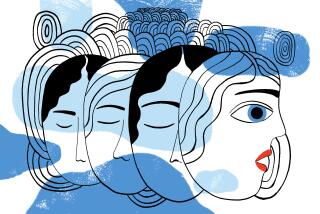We need a new womenâs health movement
Has feminism been replaced by the pink-ribbon breast cancer cult? When the House passed the Stupak amendment, which would take away abortion rights from women who get any government help purchasing insurance, the female response ranged from muted to inaudible.
Soon after, when the U.S. Preventive Services Task Force recommended that regular screening mammography not start until age 50, all hell broke loose. Sheryl Crowe, Whoopi Goldberg and Olivia Newton-John raised their voices in protest; a few dozen non-boldface women picketed the Department of Health and Human Services. If you didnât look too closely, it almost seemed as if the womenâs health movement of the 1970s and 1980s had returned in full force.
Never mind that Dr. Susan Love, author of what the New York Times dubbed âthe bible for women with breast cancer,â endorses the new research-based guidelines along with leading womenâs health groups such as Breast Cancer Action, the National Breast Cancer Coalition and the National Womenâs Health Network. For years, these groups have been warning about the excessive use of screening mammography in the United States, which carries its own dangers and leads to no detectable lowering of breast cancer mortality.
Nonetheless, on CNN last week, we had the unsettling spectacle of Cindy Pearson, the National Womenâs Health Network executive director and noted womenâs health advocate, speaking out in favor of the new guidelines, while ordinary women lined up to attribute their survival from the disease to mammography. Once upon a time, grass-roots women challenged the establishment by figuratively burning their bras. Now, in some masochistic perversion of feminism, they are raising their voices to yell, âSqueeze our breasts!â
When the Stupak anti-choice amendment passed, and so entered the healthcare reform bill, no congressional representative stood up on the floor of the House to recount how access to abortion had saved her life or her familyâs well-being. And where were the âtea baggersâ when we needed them? If anything represents the true danger of âgovernment involvementâ in healthcare, itâs a healthcare reform bill that, if the Senate enacts something similar, could snatch away all but the wealthiest womenâs right to choose.
Itâs not just that abortion is deemed a morally trickier issue than mammography. To some extent, pink-ribbon culture has replaced feminism as a focus of female identity and solidarity. When a corporation wants to signal that itâs âwoman friendly,â what does it do? It stamps a pink ribbon on its widget and proclaims that some minuscule portion of the profits will go to breast cancer research. Iâve even seen a bottle of Shiraz called âHopeâ with a pink ribbon on its label -- but no information, alas, on how much you have to drink to achieve the promised effect.
When Laura Bush traveled to Saudi Arabia in 2007, what grave issue did she take up with the locals? Not womenâs rights (to drive, to go outside without a man, etc.), but breast cancer awareness. In the post-feminist United States, issues such as rape, domestic violence and unwanted pregnancy seem to be too edgy for much public discussion, but breast cancer is pure apple pie.
So welcome to the Womenâs Movement 2.0: Instead of the proud female symbol -- a circle on top of a cross -- we have a droopy ribbon. Instead of embracing the full spectrum of human colors -- black, brown, red, yellow and white -- we stick to princess pink. While we used to march in protest against sexist laws and practices, now we race or walk âfor the cure.â
Look, the issue here isnât healthcare costs. If the current levels of screening mammography demonstrably saved lives, I would say go for it and damn the expense. But the numbers are increasingly insistent: Routine mammographic screening of women under 50 does not reduce breast cancer mortality in that group, nor do older women necessarily need an annual mammogram. In fact, the whole dogma about âearly detectionâ is shaky, as Susan Love reminds us: The idea has been to catch cancers early, when theyâre still small, but some tiny cancers are viciously aggressive and some large ones arenât going anywhere.
One response to the new guidelines has been that numbers donât matter -- only individuals do -- and if just one life is saved, thatâs good enough. So OK, let me cite my own experience. In 2000, at the age of 59, I was diagnosed with Stage II breast cancer on the basis of one dubious mammogram followed by a really bad one, followed by a biopsy. Maybe I should be grateful that the cancer was detected in time, but the truth is, Iâm not sure whether these mammograms detected the tumor or, along with many earlier ones, contributed to it. One known environmental cause of breast cancer is radiation, in amounts easily accumulated through regular mammography.
And why was I bothering with this mammogram in the first place? I wanted to get my hormone replacement therapy, or HRT, prescription renewed, and the nurse practitioner wouldnât do that without a fresh mammogram.
As for the HRT, I was taking it because I had been convinced by prevailing medical propaganda that HRT helps prevent heart disease and Alzheimerâs. Then in 2002, we found out that HRT is itself a risk factor for breast cancer (as well as being ineffective at warding off heart disease and Alzheimerâs). So did I get breast cancer because of the HRT -- and possibly because of the mammograms themselves -- or did the HRT lead to the detection of a cancer I would have gotten anyway?
I donât know, but I do know that that biopsy was followed by the worst six months of my life, spent bald and barfing my way through chemotherapy. This is whatâs at stake here -- not only the possibility that some women may die because their cancers go undetected, but that many others will lose months or years of their lives to debilitating treatments for radiation-caused cancers or, possibly, cancers that didnât require treatment at all.
What we really need is a new womenâs health movement, one thatâs sharp and skeptical enough to ask all the hard questions: What are the environmental (or possibly lifestyle) causes of the breast cancer epidemic? Why are existing treatments such as chemotherapy so toxic and heavy-handed? And, if the old narrative of cancerâs progression from âearlyâ to âlateâ stages no longer holds, what is the course of this disease (or diseases)?
What we donât need, no matter how pretty and pink, is a ladiesâ auxiliary to the cancer-industrial complex.
Barbara Ehrenreich is the author, most recently, of âBright-Sided: How the Relentless Promotion of Positive Thinking Has Undermined America.â A version of this article appears at tomdispatch.com.
More to Read
Get the L.A. Times Politics newsletter
Deeply reported insights into legislation, politics and policy from Sacramento, Washington and beyond. In your inbox three times per week.
You may occasionally receive promotional content from the Los Angeles Times.










